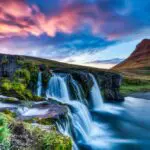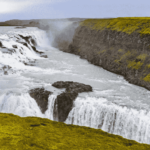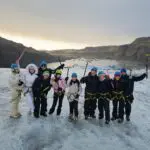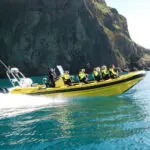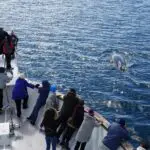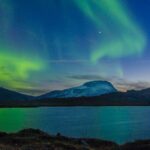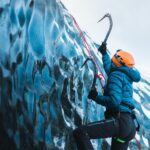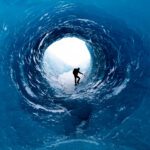A seven-day ring road trip to Iceland, which begins and ends in Reykjavik, is the shortest amount of time you can do it comfortably, in our opinion. It includes many of Iceland’s most popular sightseeing spots and a few underrated ones.
A disclaimer is in order; this seven-day trip is expected to be done during the summer months when roads are clear and the days are long.
First day – Reykjavik
You have arrived in our beautiful city. You are raring to go, but we recommend you spend the day in Reykjavik. Get the plane out of your system and join us for a Walk with a Viking tour.
It is the perfect introduction to Iceland and Reykjavik. We will visit all the highlights of Reykjavik city center and introduce you to our long history.
Second day – South Iceland
Of course, we send you onto the Golden Circle. It is popular for a reason; it is stunning, full of history, and just quintessentially Icelandic.
Þingvellir National Park
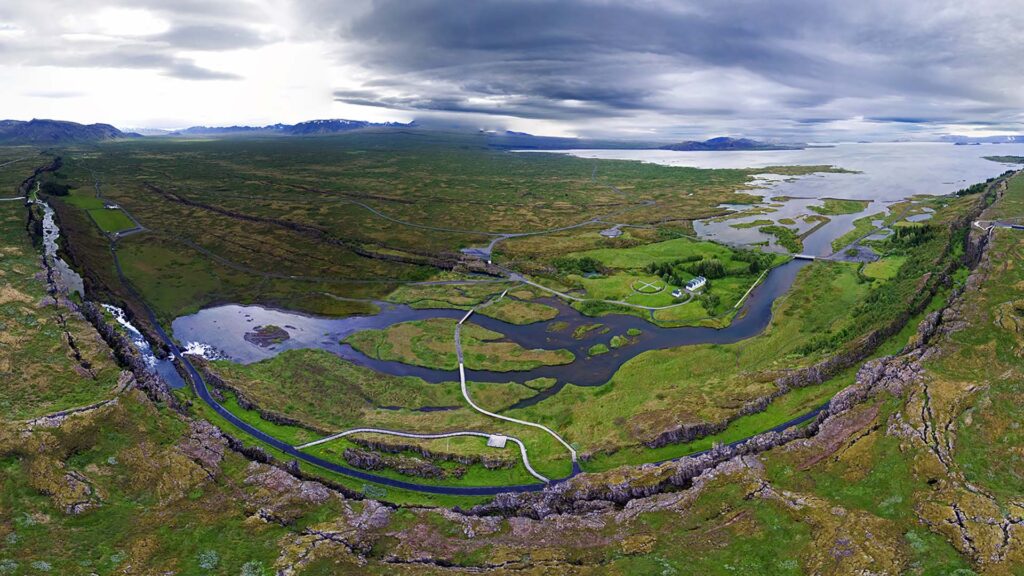
The first stop is Þingvellir National Park. This UNESCO World Heritage Site is where the first parliament in the world was founded in 930. Icelandic politicians (lögsögumenn and goðorðsmenn) met once a year from all around the country to go over things, review laws, and possibly make new ones.
It is also one of the very few places (which are all in Iceland) where you can see the North American and Eurasian tectonic plates above ground. Iceland is situated on top of the Mid-Atlantic Ridge. It is the reason why there is so much volcanic activity in the country. It is being pulled apart, and Þingvellir gets bigger by about an inch a year (2.5cm).
Geysir Geothermal Area
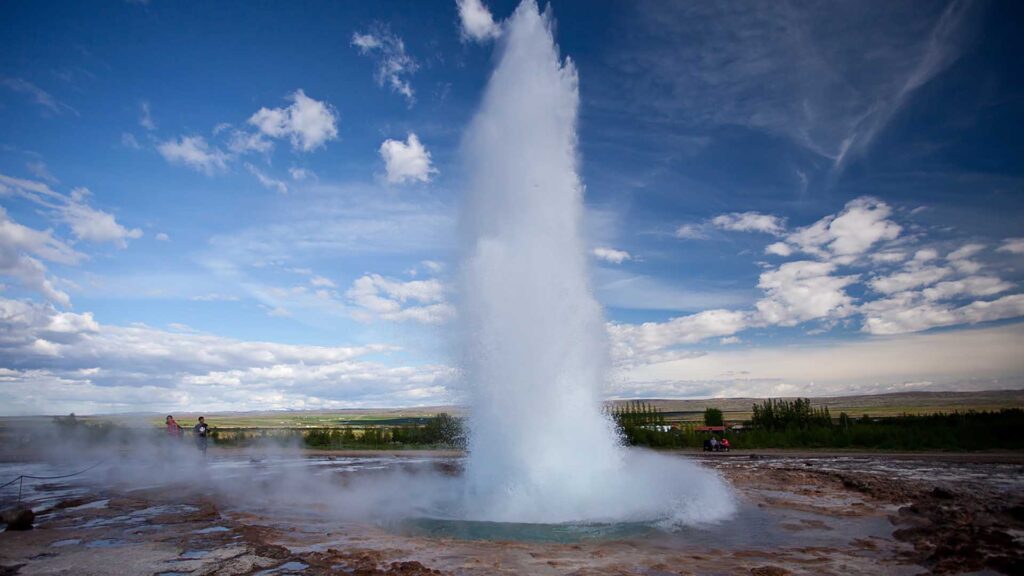
The next stop is Geysir Geothermal Area. We ask you to be careful here and stay on the walking paths. The area is full of small geysers and hot water running in streams. But it is beautiful; the earth’s colors are quite striking here. And we can’t forget Strokkur, the geyser which erupts every few minutes – like clockwork. It spews water up to 98 feet (30 meters) up in the air.
Its cousin Geysir used to erupt regularly and then sometimes made to erupt by pouring soap into it (the practice has thankfully stopped). It is much larger than Strokkur and frequently erupted to 239 feet (70 meters) in the air. Its name is also the origin of the word geyser.
Gullfoss Waterfall
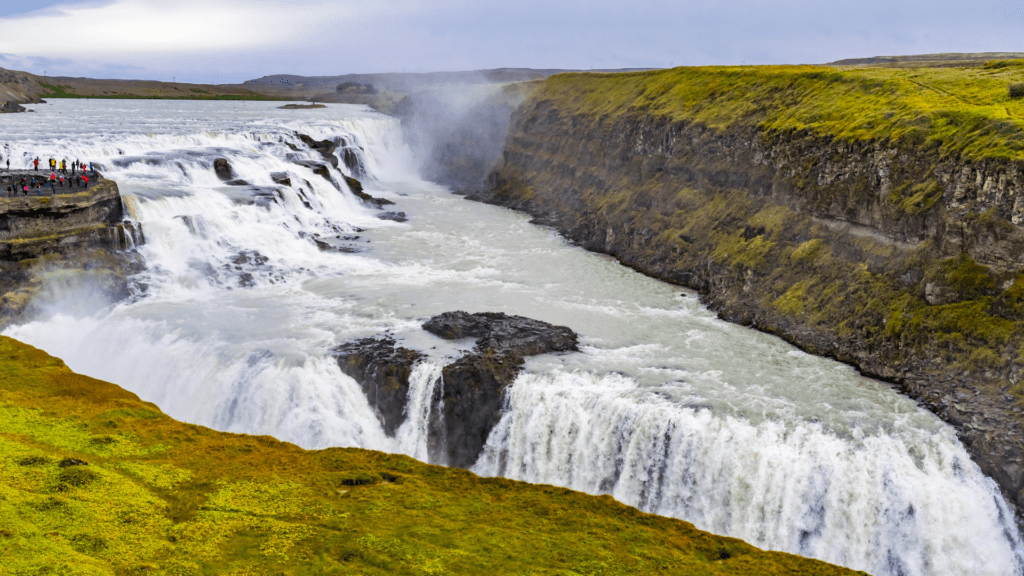
The third stop of the Golden Circle is Gullfoss Waterfall, a two-step waterfall filled with meltwater from Langjökull Glacier. The first waterfall is 36 feet (11 meters) tall, while the second is 69 feet (21 meters) tall. It then falls into a crevice 105 feet (32 meters) deep and 20 meters wide. The crevice, or canyon, is about 1.6 miles long (2.5 kilometers) and has been forming for 10.000 years – getting deeper by about 10 inches (25 centimeters) a year.
The next stop is at Seljalandsfoss and Gljúfrabúi, but we recommend having something to eat first. You have a few options. You can stop at Efstidalur close to Geysir or go to Friðheimar Tomato Farm.
After a good lunch, you drive through Flúðir, where you can have a soak in the Secret Lagoon if you feel so inclined.
Seljalandsfoss and Gljúfrabúi Waterfalls
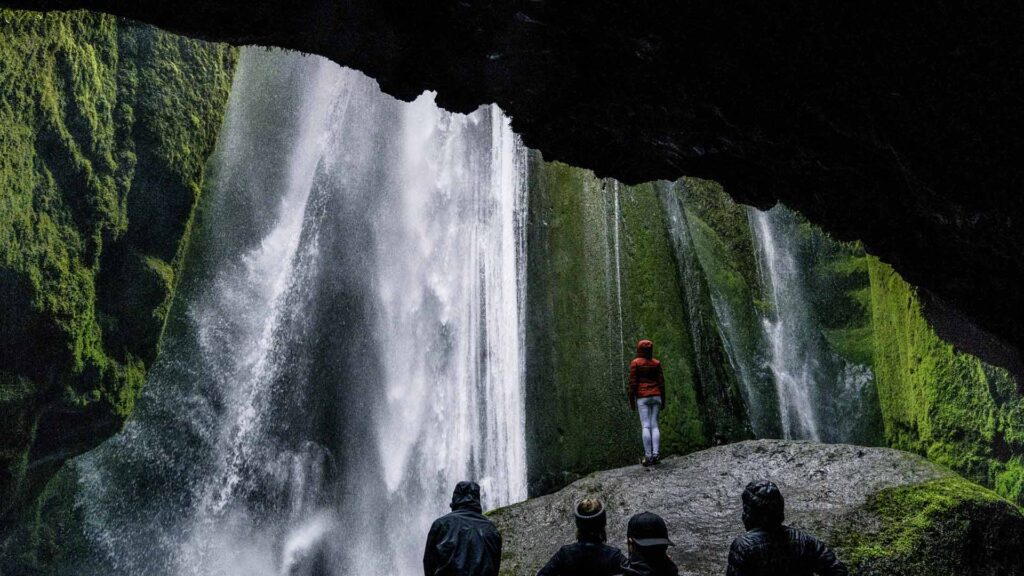
Seljalandsfoss can be seen from the Ring Road. The famous waterfall is far from being the largest waterfall in Iceland, but it is the only one you can walk behind. There’s something extraordinary walking behind a waterfall – so bring your waterproof clothing!
Next door to Seljalandsfoss is Gljúfrabúi Waterfall. It is a 10-minute walk away and is one of Iceland’s hidden gems. You will have to walk into a small canyon to reach it when you get to it. It’s good to have your raingear on since you will also need it here!
Skógafoss Waterfall
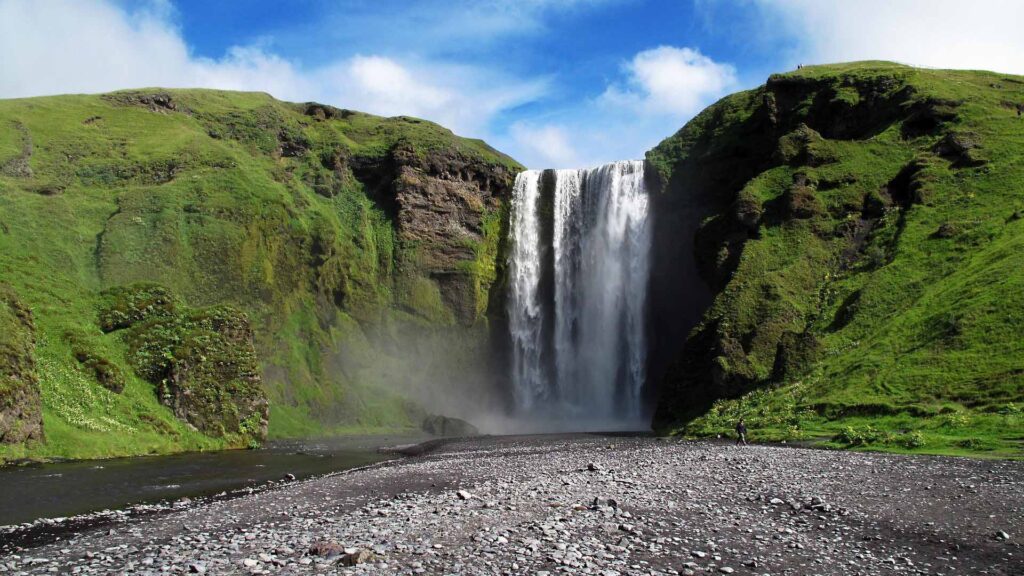
The famous Skógafoss waterfall is next in line. You cannot walk behind this waterfall, but you can walk close up to it. Next to the waterfall, you will see steps up to the top; we recommend doing that if you can. It gives excellent views over the small portion of Iceland, which is flat! It is also the beginning of the Fimmvörðuháls hike over to Þórsmörk.
There is also an interesting folk museum in the area, Skógar Folk Museum. It’s a cultural heritage collection of 8000 regional artifacts exhibited in 6 historical buildings and 3 museums!
Reynisfjara Black Sand Beach
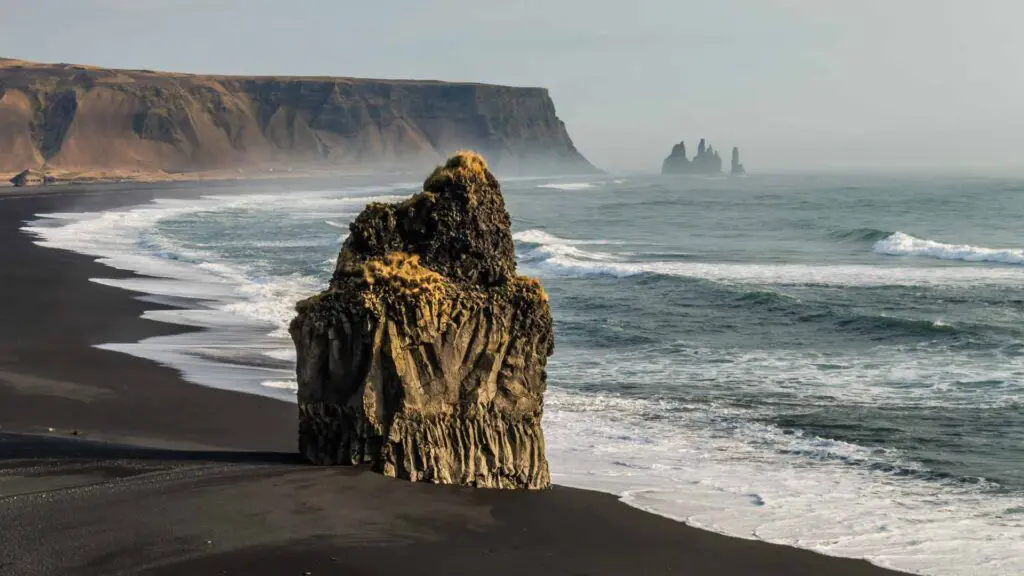
Reynisfjara Black Sand Beach is the second to last stop of the day. The beautiful, sprawling black sand beach is well worth the visit. To the left are Reynisdrangar rock formations, which legends say were made when two trolls were trying to drag a three-mastered ship to land. The trolls and the ship turned to stone when the sun hit them.
To the right, you can see Dyrhólaey (Door Hill Island). The views from there are broad, and the puffin nests there during the summer.
We ask you to be careful when visiting the beach and keep completely out of the water. The beach is famous for its sneaker waves which have sadly claimed a few lives.
The last stop of the day and where we recommend you sleep for the night is Vík in Mýrdalur. A small town on the other side of Reynisfjara.
Third day – More South Iceland
After a good night’s sleep, it is time to keep going.
Fjaðrárgljúfur
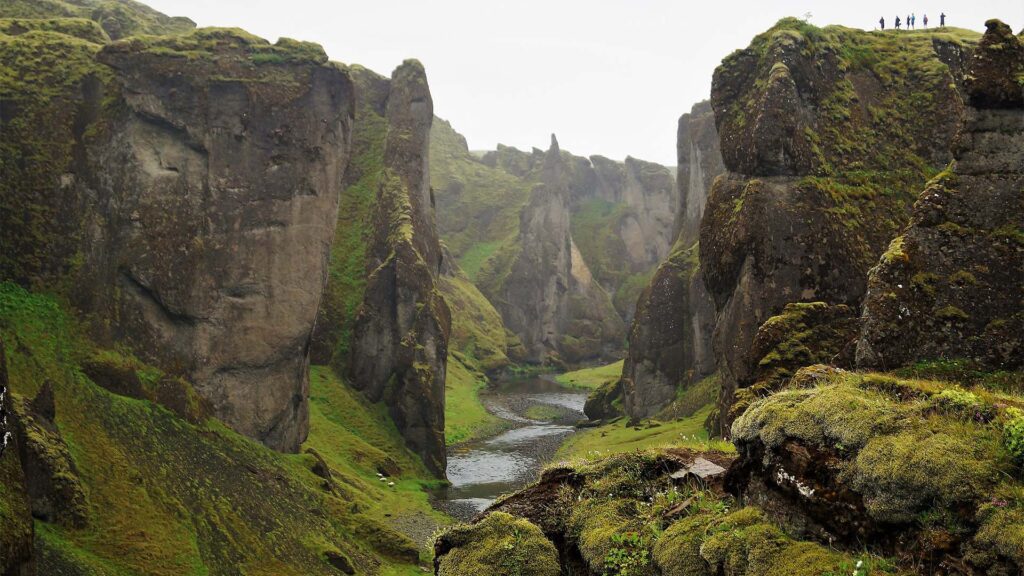
Fjaðrárgljúfur was made famous by Justin Bieber when he came to Iceland a few years back and shot a video. The place is wonderful and well worth the visit. The canyon is up to 330 feet (100 meters) deep and about 1.2 miles (2 kilometers) long. It was created by progressive erosion by flowing water from glaciers during the Ice Age.
Jökulsárlón Glacier Lagoon and Diamond Beach
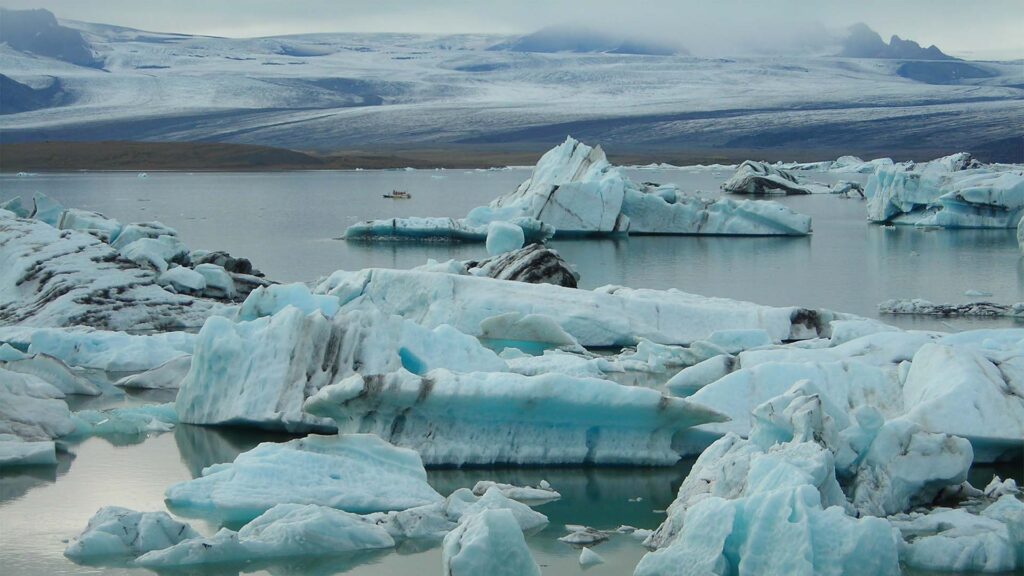
Next up on the sightseeing list are the beautiful Jökulsárlón Glacier Lagoon and Diamond Beach. You could also check out Fjallsórlón Glacier Lagoon, which is Jökulsárlón’s smaller neighbor.
Jökulsárlón is by Breiðamerkurjökull Glacier and is made up of meltwater from it. It started forming in the mid-20th century and has slowly but surely been eroding the Breiðamerkursandur beach. It is now the deepest lake in Iceland at 932 feet (284 meters) and covers about 6.9 sq mi (18 km2). Since the 1970s, it has increased fourfold in size and has doubled in size in the last 15 years.
The outlet glacier Breiðamerkurjökull is responsible for the Breiðamerkursandur beach (of which the Diamond Beach is a part). It has a breadth of about 25 kilometers. Diamond Beach is so-called because small icebergs are scattered on the beach.
Stöðvarfjörður Fjord
The last stop of the day is Stöðvarfjörður in the East Fjords. There you can visit the brilliant Petra’s Stone and Mineral collection. Originally the home of Petra, who spent 80 years collecting crystals, minerals, and stones from the area, it is not a museum and shows the vast collection.
Day Four – The East Fjords
Off we go!
Egilsstaðir and Vök Baths
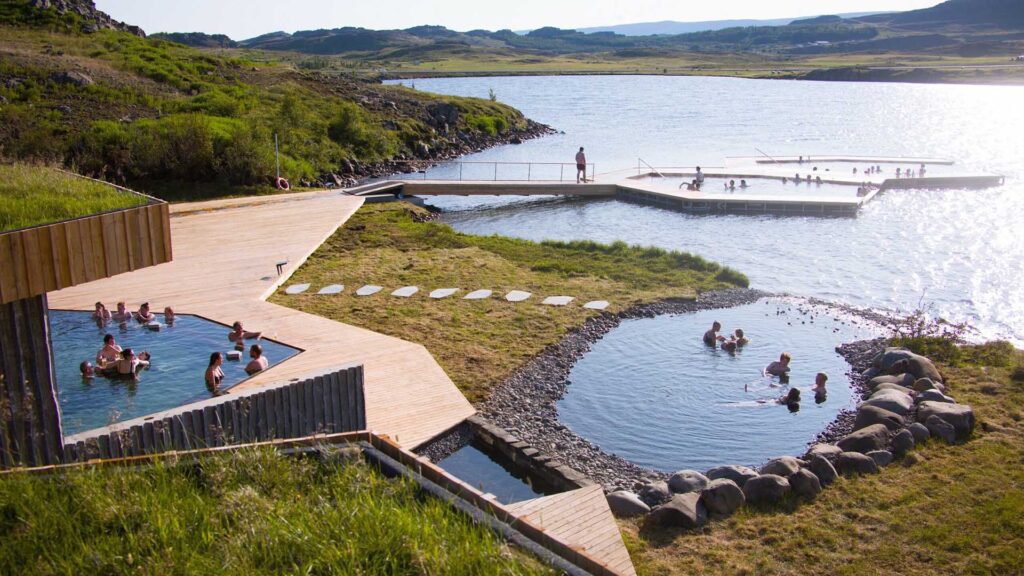
The next stop is Egilsstaðir in Fjarðarbyggð in the East Fjords. We recommend you check out Vök Baths, have a soak, and eat! Geothermal water isn’t abundant in the East Fjords due to the area’s old age, so the spa is a great treat!
Borgarfjörður Eystri and The Elves
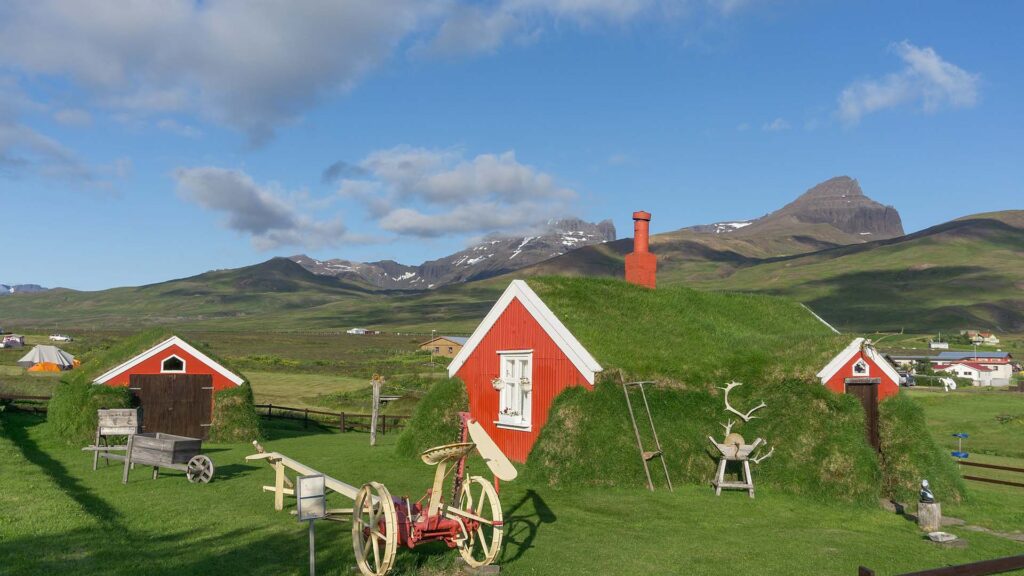
After a relaxing soak, it’s off to the small town of Borgarfjörður Eystri. It is famous for its elf and puffin population. You can walk almost right up to the puffins, but please don’t do that.
Stuðlagil Canyon
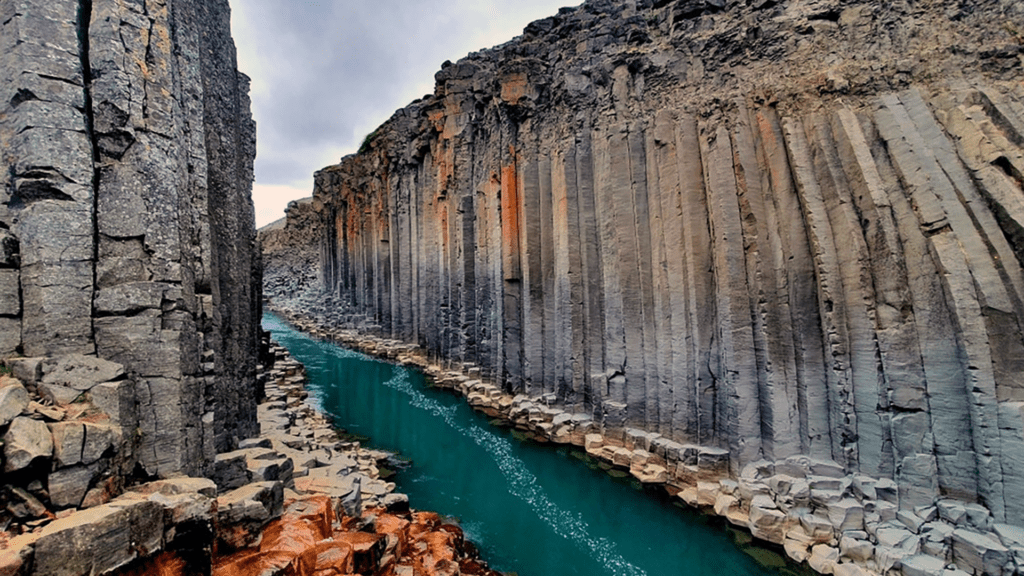
No visit to the East Fjords is complete without visiting the beautiful Stuðlagil Canyon. The canyon only became visible when the Kárahnjúkavirkjun Hydropower Plant was opened in 2009. Known for its columnar basalt rock formations and blue-green water, it is totally worth the visit!
Now there will be a little driving over the heaths of North-East Iceland. We are on our way to Mývatn Lake. There are a few things to visit there.
Krafla and Námafjall
Krafla Caldera is one of the stops worth a visit. In the 1970s and 1980s, there was a volcanic episode within the volcano, including nine eruptions. You can visit the Víti crater, lake, and mud pots at Námafjall. The rotten egg smell is pungent, but don’t let it stop you from checking them out.
Mývatn Nature Baths
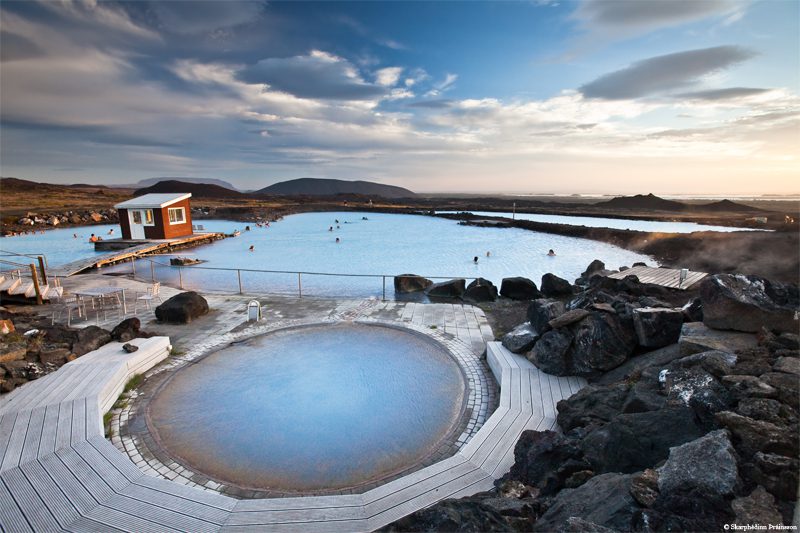
On the other side of Námafjall is the Mývatn Nature Baths. Similar to the Blue Lagoon but smaller and more intimate.
Dimmuborgir
After having a soak in the nature baths, we recommend you check out Dimmuborgir lava formations and Mývatn Lake. You might see a lot of midges, but not to worry – this species doesn’t bite. It’s just annoying.
You will spend the night here.
Day Five – North Iceland
During this day, you will visit the Diamond Circle, North Iceland’s version of the Golden Circle.
Dettifoss Waterfall
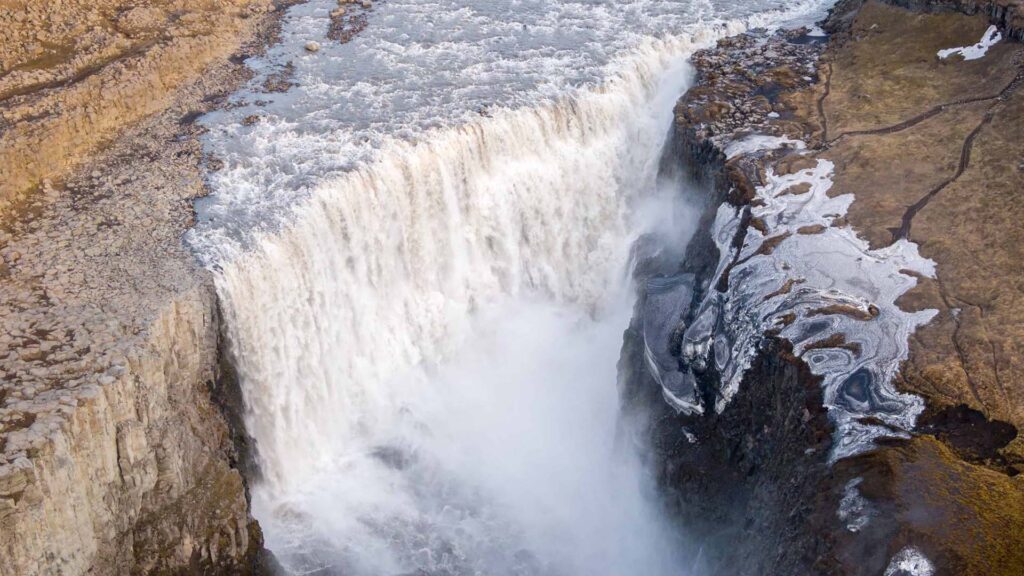
The first stop is Dettifoss Waterfall. Some said it is the most powerful waterfall in Europe, but that’s not entirely true. It is, however, the biggest waterfall in Iceland in terms of volume. You can walk quite close to it, and it is a sight.
Ásbyrgi Canyon
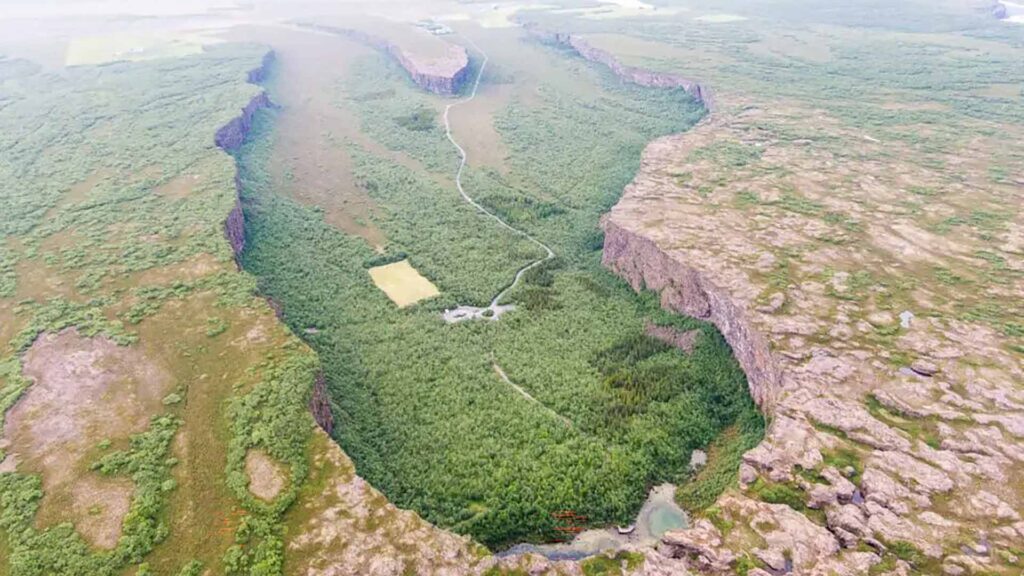
Next is Ásbyrgi, an old glacial canyon, and forest. It is shaped like a horseshoe, and legends say that its shape is because Sleipnir, Óðinn’s horse, stepped down in the area.
In the middle of the canyon is a small island that gives excellent views of the canyon. It is most likely that Ásbyrgi was formed by catastrophic glacial flooding some 8-10.000 years ago and 3000 years ago. That is if you don’t believe Óðinn’s story. The river still exists but has changed course and now runs about 2 kilometers to the east (it’s the one that feeds Dettifoss waterfall).
Húsavík and Whale Watching
The third stop of the day is Húsavík. You can join a whale-watching tour here, but Húsavík is called the Whale Watching Capital of Iceland. There’s also a small Eurovision Museum. You might remember the Will Ferrell movie Eurovision Song Contest: The Story of the Fire Saga but the main characters were from Húsavík.
Swim with Goldfish!
If you like a soak, there’s a geothermal lake just outside Húsavík we recommend you visit. Goldfish live in the lake, as people have set their fish free.
After Húsavík, you go onto Akureyri, the biggest town in North Iceland. You can visit the Forest Baths on your way if you fancy. It opened in the summer of 2022.
Day Six – Snæfellsnes Peninsula
Today you will do a bit of driving, so we recommend an early start. Heading to Snæfellsnes Peninsula, the area is rife with photo-op moments, with lava fields and Snæfellsjökull Glacier as great backdrops.
Stykkishólmur
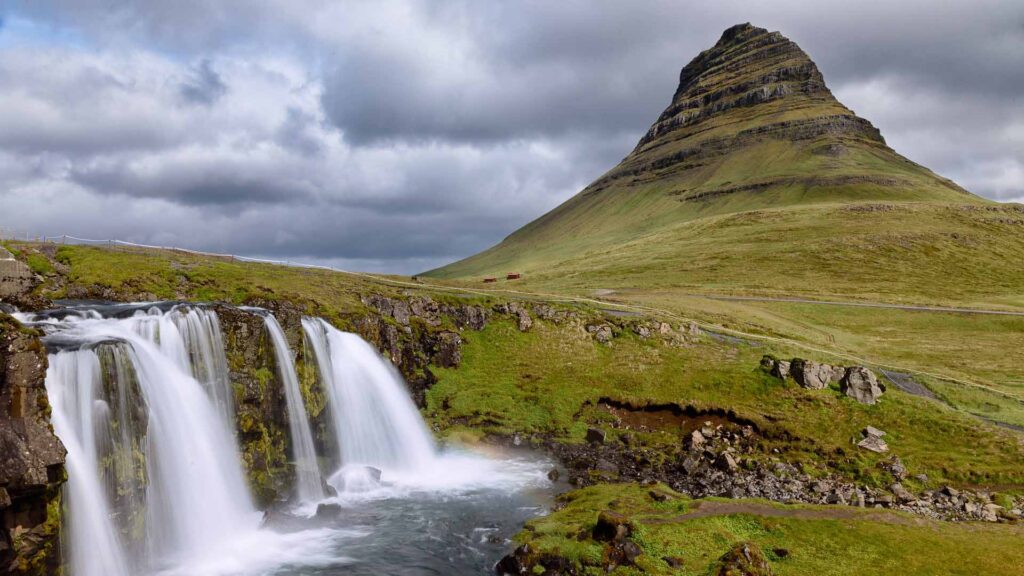
From Akureyri, you drive along the Ring Road to Stykkishólmur for lunch. The beautiful old town was once an important trading post in Iceland. Next to the town is the famous Kirkjufell mountain, a perfect Instagram moment.
Lóndrangar and Djúpalónssandur
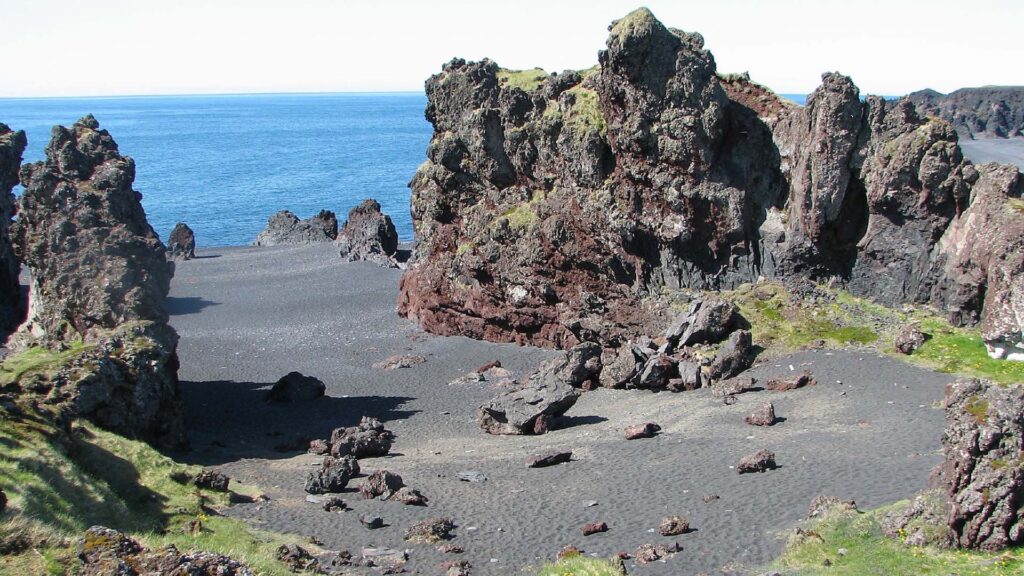
Lóndrangar is a pair of rock pinnacles in Iceland. They are volcanic plugs of basalt which have been hewn out from softer surrounding rock by erosion. The plugs are 75 and 61 meters tall and are remnants of a bigger crater which has mostly eroded away.
Djúpalónssandur is a dramatic, arched, black sand beach with many rock formations. In the past, there was a fishing village there; boats were moored on the beach. Down the coast, there are famous four lifting stones; once fishermen wanted to work at sea, they had to deal with lifting stones as a part of recruitment. The largest stone is called Fullsterkur (154 kg, Fully Strong), then Hálfsterkur (100 kilograms, Half Strong), Hálfdrættingur (54 kg, Weak), and Amlóði (23 kg, Bungler). Nowadays, tourists also try to pick them up, just for fun.
Driving around the Snæfellsnes Peninsula, we recommend stopping by Lóndrangar, at Djúpalónssandur, Arnarstapi, and Búðir.
Arnarstapi
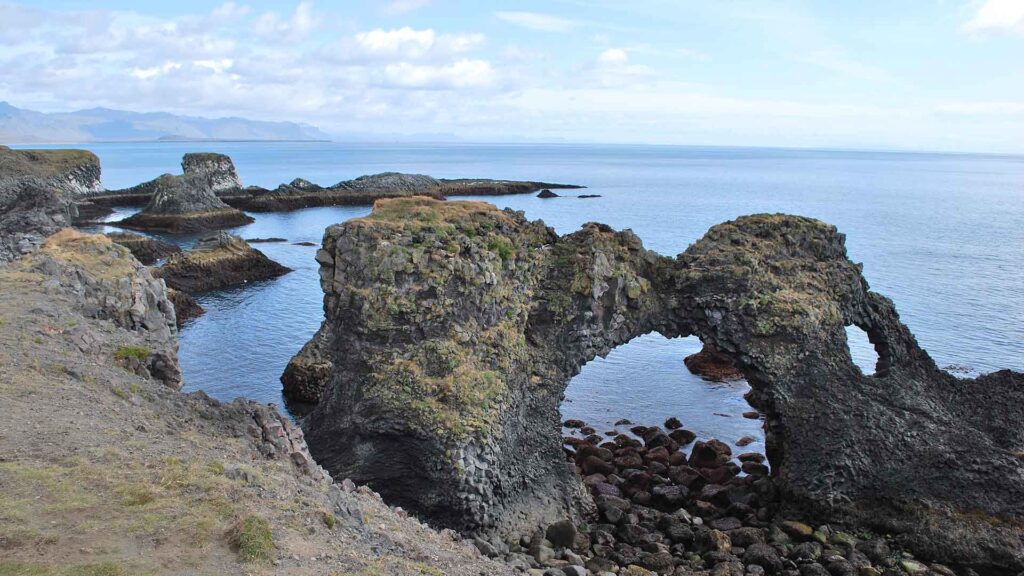
Arnarstapi is a small fishing village at the foot of the Snæfellsjökull glacier. The coastline is very dramatic with rock formations like Gataklettur and the Stone Bridge. Arnastapi is also a paradise for bird-watchers as the surrounding cliffs are popular among various bird species.
Búðarkirkja
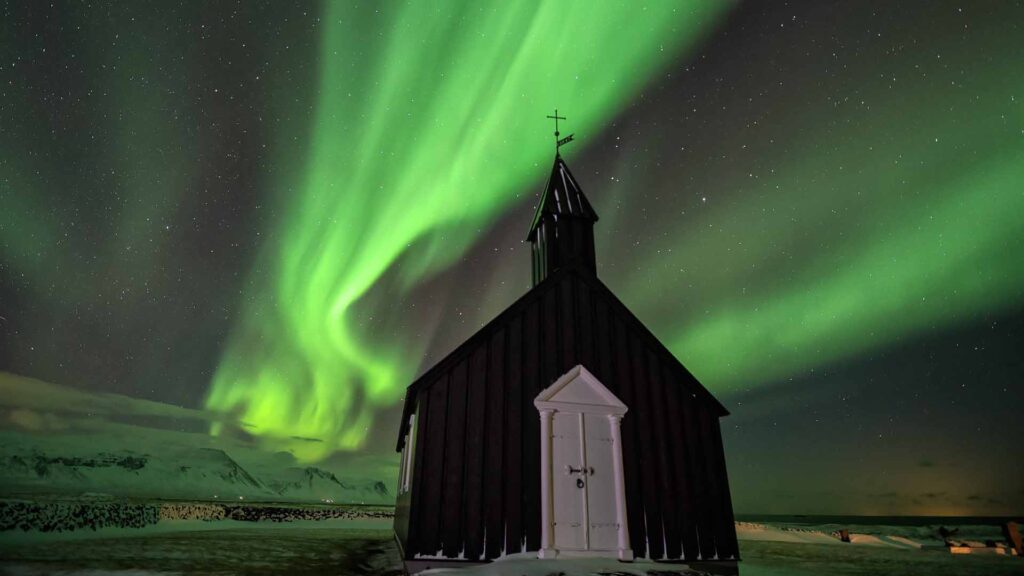
The famous black-painted church Búðarkirkja is worth the visit for a photo op. It is in the Búðarhraun lava field and is very picturesque.
After a long and full day of sightseeing, it is time to head back to Reykjavik.
Day Seven – Reykjavik
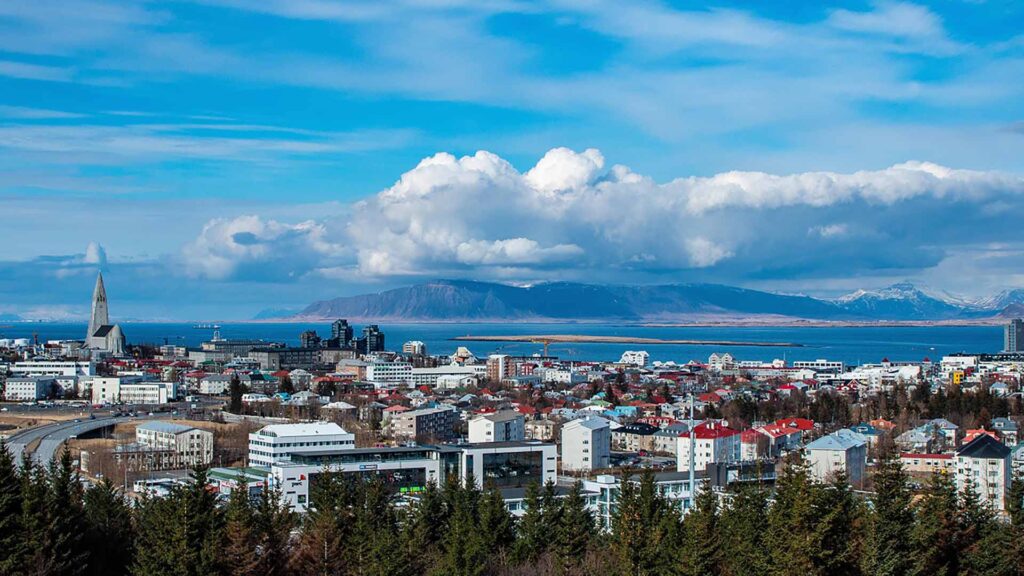
On this last day of the seven-day trip around Iceland, we recommend a bit of chill. Visit one of the many swimming pools of Reykjavik and check out a museum or two. We recommend checking out Reykjavik City Museum’s new exhibition in Aðalstræti 10, one of the oldest buildings in Reykjavik. The ticket is valid for both that exhibition and the Settlement Exhibition. They are connected by an underground tunnel and give a comprehensive view of Reykjavik’s history.
For the evening, you should join us for a Reykjavik Food Lovers tour. You will get to taste some authentic Icelandic food and get a taste of the culture. If you have already tried all the quintessential Icelandic food, we recommend you check out the Reykjavik Beer & Booze tour instead!
Honorable mentions which are not included in this 7-day itinerary:
- Hvítserkur
- Svartifoss waterfall
- Lystigarðurinn Botanical Gardens in Akureyri
- Ytri-Tunga in Snæfellsnes
- LAVA museum in Hvolsvöllur
- The DC plane wreck in Sólheimasandur
- Siglufjörður in North Iceland
Please signup HERE for our newsletter for more fun facts and information about Iceland!


